Biography
A man rooted in his land, an artist of international reach
A man rooted in his land, an artist of international reach
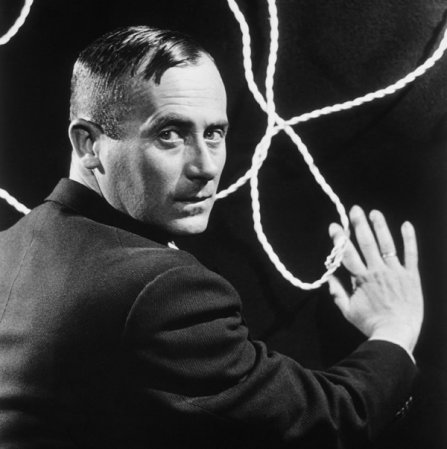
Joan Miró i Ferrà is born on 20 April at 4 Passatge del Crèdit, Barcelona. His father, Miquel Miró i Adzerias, son of a blacksmith in Cornudella, was a silversmith and watchmaker; his mother, Dolors Ferrà i Oromí, was the daughter of a cabinet maker in Palma de Mallorca.
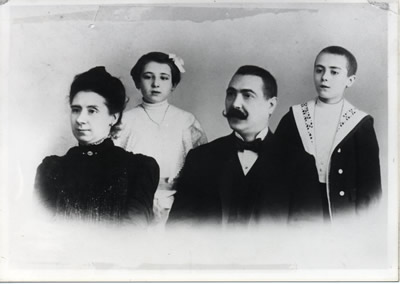
He begins primary school at 13 Carrer del Regomir, Barcelona, where he attends drawing classes given by a Mr Civil.
His earliest surviving drawings date from this year.
He enrols at the Escola de Comerç in Barcelona and, until 1910, also attends classes at the Escola Superior d'Arts Industrials i Belles Arts (La Llotja), where he is taught by Modest Urgell and Josep Pascó.
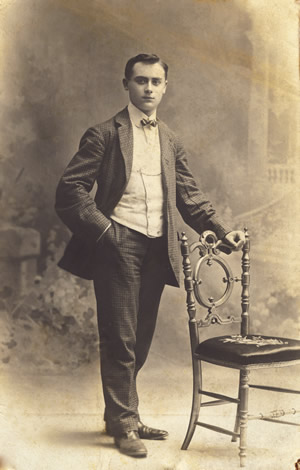
He starts work as an accounts clerk at Dalmau i Oliveres chemist's shop in Barcelona. He takes part in his first exhibition, a display of old and modern portraits and drawings organised by the city council.
He struggles to adapt to his job at Dalmau i Oliveres and his health suffers. He catches typhoid fever and spends time convalescing at the farmhouse his parents have recently bought in Mont-roig.
He decides to devote himself entirely to painting and enrols at the art school run by Francesc Galí, which he attends until 1915. His fellow students include Joan Prats, Josep Francesc Ràfols, Enric Cristòfol Ricart and possibly Josep Llorens Artigas, among others.
He enrols at the Cercle Artístic de Sant Lluc, where he attends life classes. Here he meets up again with Joan Prats and the two become close friends.
He meets dealer Josep Dalmau, who shows an interest in his work. He rents a studio with E.C. Ricart at 51 Carrer de Sant Pere més Baix, Barcelona, which they share until 1918.
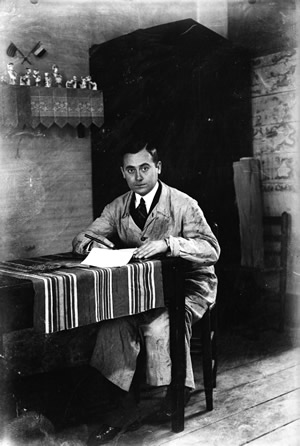
Through Josep Dalmau he probably meets Maurice Raynal and Francis Picabia. He takes an interest in poetry and reads Catalan and French avant-garde reviews such as Pierre Reverdy's Nord-Sud and Albert Birot's SIC. He visits the Exposition d'Art Français, in Barcelona.
He joins the Agrupació Courbet, together with Josep Llorens Artigas, J.F. Ràfols, E.C. Ricart, Rafael Sala, Francesc Domingo and Marià Espinal, all students of Gali´s art school and the Cercle Artístic de Sant Lluc.
First solo show at the Galeries Dalmau, Barcelona.
He travels to Paris for the first time, where Josep Dalmau tries to organise an exhibition for him. He visits Picasso.
He remains in Paris until 1925. He has the use of Pablo Gargallo's studio at 45 Rue Blomet during the academic terms. He spends the rest of the year mainly at Mont-roig. He has his solo exhibition in Paris at the Galerie La Licorne, organised by Josep Dalmau. The introduction to the catalogue is written by Maurice Raynal.
In Paris, he lives and works at 45 Rue Blomet. He becomes friendly with André Masson, who is a neighbour, and with Roland Tual.
Through Masson he meets Michel Leiris and probably Antonin Artaud, Robert Desnos, Jean Dubuffet, Paul Éluard, Marcel Jouhandeau, Georges Limbour, Raymond Queneau and Armand Salacrou. He also meets Ernest Hemingway, who purchases The Farm, and Ezra Pound. In Mont-roig he begins painting Tilled Field, Catalan Landscape (The Hunter) and Pastoral, which mark a turning point in his art.
Avant-garde poets and writers gather in Masson's studio at 45 Rue Blomet. Miró's friends during this period are Max Jacob, Michel Leiris, Georges Limbour, Benjamin Péret, Armand Salacrou and Roland Tual.
André Breton meets Miró during a visit to the studio in Rue Blomet. First solo exhibition at the Galerie Pierre, Paris.
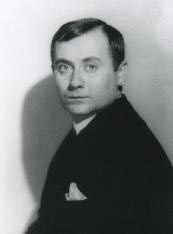
He moves into a new studio at 22 Rue Tourlaque, in the Cité des Fusains. His neighbours are Max Ernst, Hans Arp and probably Paul Éluard and Camille Goemans. Sergei Diaghilev commissions Miró and Ernst to design the sets and costumes for the ballet Romeo and Juliet to be performed by the Ballets Russes.
He produces the first object-collage, entitled Spanish Dancer. He visits Belgium and Holland. He paints the Dutch Interiors in Mont-roig.
He works on the Imaginary Portraits series. He marries Pilar Juncosa in Palma de Mallorca. They settle in Paris, in an apartment at 3 Rue François Mouton.
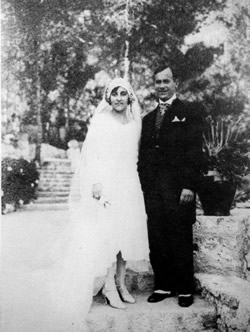
He works on a series of paintings in very varied styles. According to Miró, they are a farewell to painting, albeit a temporary one, as he wishes to work in other media such as bas relief and sculpture. His only daughter, Maria Dolors, is born in Barcelona. In Mont-roig he produces his first three-dimensional pieces. First solo show in the United States, at the Valentine Gallery, New York.
In Mont-roig he starts work a series of paintings on Ingres paper and object-paintings.
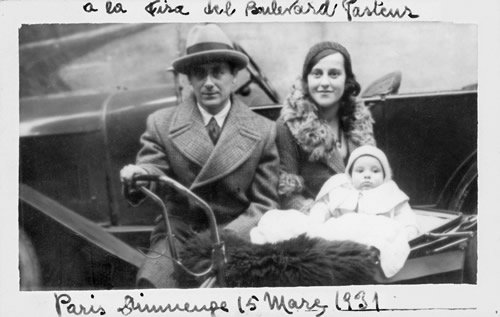
Through Joan Prats he meets architect Josep Lluís Sert. He resolves to spend more time in Barcelona. He lives and works in the family home at 4 Passatge del Crèdit until 1936. He works on a new series of objects and he designs the curtain, sets, costumes and objects for the ballet Jeux d'enfants performed by the Ballets Russes de Monte-Carlo, with music by Georges Bizet, libretto by Boris Kochno and choreography by Léonide Massine. First solo show at the Pierre Matisse Gallery, New York.
He works on a series of 18 collages and then produces paintings based on them. Publication of Georges Hugnet's Enfances, the first book illustrated by Miró.
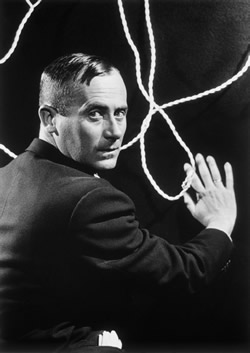
He signs a contract with Pierre Matisse, who represents him in the United States.
He starts work on a series of 27 paintings on masonite. He travels to Paris with his latest works, which are to be exhibited in New York. When the Spanish civil war breaks out, he decides to stay in Paris. His wife and daughter join him, and they remain in France until 1940.
He lives and works in an apartment at 98 Boulevard Auguste Blanqui, Paris. He attends life classes at the Académie de la Grande Chaumière, where he produces a large number of drawings. He produces a large mural painting, The Reaper (Catalan Peasant in Revolt), for the Spanish Republican government's pavilion, designed by Josep Lluís Sert and Luis Lacasa, at the World Fair in Paris.
He works on etchings and dry-point engravings with Marcoussis and prints them at the studios of Roger Lacourière and Stanley W. Hayter.
He leaves Paris in the summer and rents a house in Varengeville-sur-Mer, Normandy, where the family remain until 1940.
In January he starts work on a series of 23 gouaches, which he continues in Palma de Mallorca and completes in Mont-roig in September 1941. It comes to be known as the Constellations series. The Germans bomb Normandy at the end of May and Miró decides to return to Spain with his family, where they settle in Palma de Mallorca.
First major retrospective exhibition at the Museum of Modern Art, New York. Organisation and catalogue by James Johnson Sweeney.
He continues working exclusively on paper. He returns to Barcelona, where he lives at 4 Passatge del Crèdit.
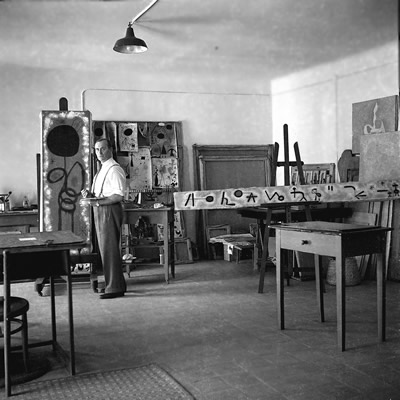
He continues working on paper, with the sole known exception of Painting with Art Nouveau Frame, from the Joan Prats collection.
He produces his first ceramics, using materials from an unsuccessful firing in 1941 by Josep Llorens Artigas. This marks the start of the first period of collaboration between them, which continues until 1947.
Publication of the set of 50 lithographs known as the Barcelona Series, under the supervision of Joan Prats. He returns to painting on canvas, which he had barely touched since 1939.
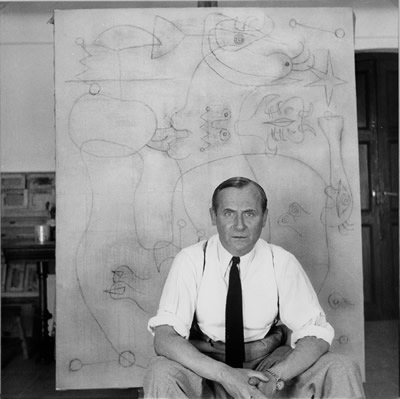
He works on several series of large-format paintings.
He produces his first bronze sculptures.
First trip to the United States, where he produces a mural painting for the Gourmet Room at the Terrace Plaza Hotel in Cincinnati. During his stay in New York he frequents Stanley W. Hayter's studio Atelier 17, where he explores engraving techniques. He takes part in Le Surréalisme en 1947: Exposition internationale du surréalisme at the Galerie Maeght, Paris, organised by André Breton and Marcel Duchamp.
First solo exhibition at the Galerie Maeght, Paris. Aimé Maeght becomes his new representative in France.
This year and next he alternates between two types of painting: one more reflective and the other more gestural and impulsive. Although based in Barcelona, he makes frequent visits to Paris to work on printing techniques at the Mourlot studio (lithographs) and at the Atelier Lacourière (engravings). His work becomes increasingly focused on ceramics and sculpture. Exhibition at the Galerías Layetanas, Barcelona, sponsored by Cobalto 49.
He lives and works at 4 Passatge del Crèdit 4, Barcelona, until the autumn, when he moves to a flat at 9 Carrer de Folgaroles, where he also works, although he keeps on the studio in Passatge del Crèdit. He starts work on the mural painting for the dining hall at Harkness Commons, Harvard University, commissioned by Walter Gropius, which he completes the following year.
In Mont-roig, he works on sculptures in a studio built for him at the farmhouse.
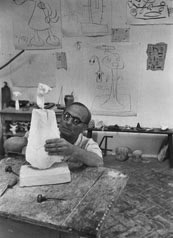
Second trip to the United States.
He embarks on a new period of collaboration with Josep Llorens Artigas in Gallifa. Over the next two years he produces more than 200 ceramic pieces.
He produces a series of paintings on cardboard. He then stops painting until 1959 but continues working on ceramics and graphic arts.
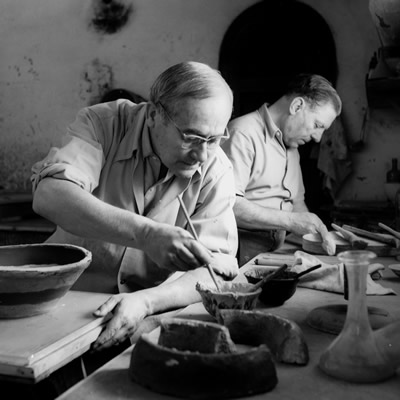
He sells the flat in Passatge del Crèdit and moves permanently to Palma, where he builds a house and commissions Josep Lluís Sert to design a studio for him.
Unveiling of the two murals for Unesco in Paris, for which he receives the Guggenheim International Award.
He works with Josep Llorens Artigas on the ceramic mural for Harkness Commons, Harvard University.
Publication of Jacques Dupin's landmark book on Miró.
Retrospective at the Musée National d'Art Moderne, Paris.
Opening of the Fondation Maeght, designed by Josep Lluís Sert, including its Labyrinth with sculptures by Miró and ceramics by Miró and Artigas, at Saint-Paul-de-Vence.
He produces his first monumental sculptures in bronze, Sun Bird and Moon Bird. Retrospective at the National Museum of Art, Tokyo. He visits Japan for the first time and meets poet Shuzo Takiguchi, author of the first monograph on Miró.
Installation of a ceramic mural, produced in collaboration with Josep Llorens Artigas, at the Solomon R. Guggenheim Museum, New York. Awarded the Carnegie International Grand Prize for painting.
Final trip to the United States. Awarded an honorary doctorate by Harvard University. Retrospectives at the Fondation Maeght, Saint-Paul-de-Vence, and at the Antic Hospital de la Santa Creu, Barcelona, sponsored by the city council.
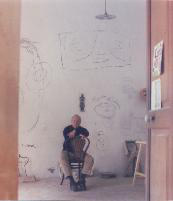
Miró otro exhibition at the Col·legi d'Arquitectes, Barcelona. Miró paints the glass front of the building (an ephemeral action that is erased when the exhibition is over).
Ceramic mural and mural painting for the Laughter Pavilion, sponsored by Japanese gas companies at the Osaka World Fair. In conjunction with Artigas, he produces a monumental ceramic mural for Barcelona Airport.
The Fundació Joan Miró - Centre d'Estudis d'Art Contemporani is legally constituted in Barcelona. Josep Lluís Sert is commissioned to design the building.
The Fundació Joan Miró - Centre d'Estudis d'Art Contemporani opens to the public. A large selection of paintings, sculptures, textiles and prints are exhibited.
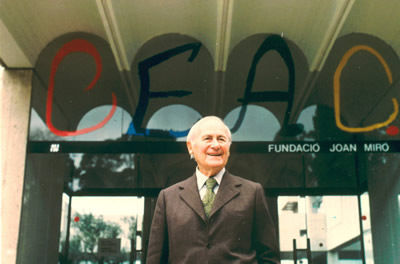
His ceramic paving is installed in Pla de l'Os, on the Rambla, Barcelona. Official opening of the Fundació Joan Miró in Barcelona, with an exhibition of drawings from the collection donated by the artist.
He produces a large tapestry in conjunction with Josep Royo for the National Gallery, Washington D.C., and starts work on the tapestry for the Fundació Joan Miró. He paints the sets and figures for Mori el Merma, with the help of the actors in the Teatre de la Claca company.
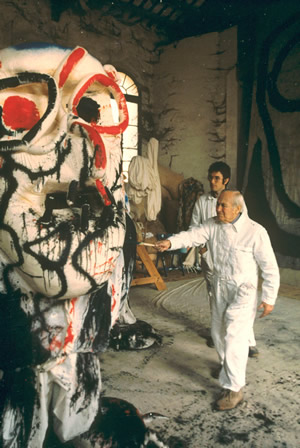
Retrospective at the Museo Español de Arte Contemporáneo, Madrid, organised in conjunction with the Fundació Joan Miró. Premiere of Mori el Merma at the Gran Teatre del Liceu, Barcelona, performed by the Teatre de la Claca company, with giant puppets, masks and sets painted by Miró. Unveiling of the monumental sculpture Lovers Playing with Almond Blossom in La Défense, Paris
Unveiling of the stained-glass windows at the Fondation Maeght, produced in collaboration with Charles Marcq, with whom Miró also made the stained-glass windows for the Chapelle Royale de Saint-Frambourg-de-Senlis, the venue for artistic and musical events held by the Cziffra Foundation. Awarded an honorary doctorate by the University of Barcelona.
King Juan Carlos of Spain awards Miró the Gold Medal for Fine Arts.
Installation of the monumental sculpture known as Miss Chicago in Brunswick Plaza, Chicago.
Installation of the monumental sculpture Woman and Bird in the Parc de Joan Miró, Barcelona, on the former site of the city slaughterhouse.
Various events and exhibitions are held to celebrate Miró's 90th birthday, including Joan Miró: A Ninetieth-Birthday Tribute at the Museum of Modern Art, New York, and Joan Miró: 1920s. Mutation of Reality at the Fundació Joan Miró, Barcelona. Unveiling of a monumental sculpture in the courtyard of Barcelona City Hall. Joan Miró dies in Palma de Mallorca on 25 December. He is buried on 29 December in Montjuïc cemetery, Barcelona.
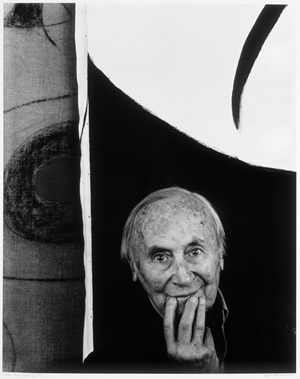
Joan Miró was born in Barcelona in 1893, but the emotional landscapes that shaped him as a person and an artist were principally those of Mont-roig, Paris, and Majorca, and later those of New York and Japan. The small town of Mont-roig in the Baix Camp region of Catalonia was a counterpoint to the intellectual ferment of his life with the surrealist poets in 1920s Paris, and to the stimulus of discovering Abstract Expressionism in New York in the forties. Some time later, in the midst of World War II, Joan Miró returned from exile in France and settled in Palma de Mallorca, which became his refuge and workplace and where his friend Josep Lluís Sert designed the studio of his dreams.
Miró’s attachment to the landscape of Mont-roig first and then Majorca was crucial in his work. His connection to the land and his interest in everyday objects and in the natural environment formed the backdrop to some of his technical and formal research. Miró avoided academicism in his constant quest for a pure, global art that could not be classified under any specific movement. Self-contained in his manners and public expressions, it is through art that Joan Miró showed his rebelliousness and a strong sensitivity to the political and social events around him. These conflicting forces led him to create a unique and extremely personal language that makes him one of the most influential artists of the 20th century.
Discover The Long Journey of Joan Miró, a biography of the artist illustrated by Marta Altés and writed by Gemma Gallardo.